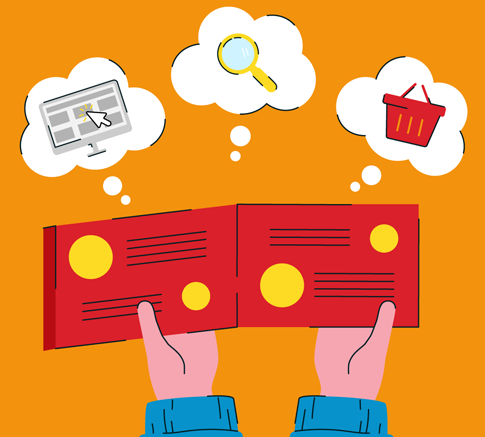13 March 2025
No longer relegated to the footnotes of marketing mixes… direct mail is well and truly back! Driven by its personalised approach and ability to foster stronger connections with consumers in a digital age, projected spend is up and the direct mail sector is in growth.1
What does this mean for businesses and marketers? To understand the impact and opportunity, you need to know what trends and preferences are behind the rise – and whether it’s likely to last.
1. A return to analogue
If you’ve ever winced at the sight of all your unread emails, you know first-hand that digital fatigue has set in. The desire for a more analogue age has seen the return of “retro” media. Vinyl sales have been on the rise over the past decade,2 polaroid cameras are on trend, and so-called “dumb phones” with minimal functionality are helping people switch off.
The yearn for the traditional in the face of digital overload can be applied to marketing too. With the saturation of emails, pop-ups, relentless social media feeds and targeted online ads, digital communications blur into the background of our busy lifestyles.
Direct mail is an antidote to tech fatigue and can feel much more personalised and meaningful than an instantly deleted email or social ad you scroll straight past. Two-thirds of consumers are more likely to open a letter than an email, and 39% said letters feel more personalised to them and their needs than bulk email message.3 Any excuse to put down the screen and pick up something tangible!

Two-thirds of consumers are more likely to open a letter than an email, and 39% said letters feel more personalised to them and their needs than bulk email message.3
2. Getting engaged
Direct mail is a powerful tool in any marketing mix: 40% of website visits prompted by mail convert into an online purchase.4 By allowing businesses to target specific customer segments with personalised messages, it can lead to higher response and conversion rates, with 30% of mail driving a commercial action such as calling or purchasing.5
Unlike digital media, direct mail offers a unique, tactile experience—providing a physical object that can be held and engaged with. It’s no wonder that 71% of consumers express complete trust in the mail they receive.6
The tangible aspect of physical mail means that it is often kept in the household or business for a while, and is looked at on average for 108 seconds over the course of a month.7 This allows for engaging content to spring off the page and then build in momentum over time, making it a memorable form of marketing that can captivate an audience along their buying journey.
3. Digital is becoming more difficult
While data protection, privacy and anti-spam laws dragged digital marketing out of the wild west and undoubtedly made things better for consumers, it’s becoming increasingly complex for marketers.
Now, with legislation brought in to regulate data tracked by cookies on websites, and the use of cookies themselves, another digital avenue for marketers just got a whole lot narrower. Marketers are going to struggle to gather third- and even first-party data from web users, so digital messaging will further lose that element of personalisation, potentially reducing its cut through.
But while marketing emails can sometimes get overlooked in our busy inboxes, physical mail has a read rate of 76%, which remains consistent year on year.8 making it easy to get noticed. Couple this with the fact that in Q4 of 2023, 8.4% of direct mail prompted a website visit, with 4.8% prompting an account look-up and 3.3% an online purchase,9 the benefits of physical mail over digital becomes obvious.

8.4% of direct mail prompted a website visit, with 4.8% prompting an account look-up and 3.3% an online purchase,9 the benefits of physical mail over digital becomes obvious.
4. Making the most of multi-channel strategies
Pay Per Click and online media campaigns can become costly if the targeting is ineffective or keywords being used are particularly competitive. As such you may be bidding on ad words at a high price that don’t generate great visibility in a crowded online forum. Many marketers choose to supplement PPC activity with direct mail to enhance campaigning. This ensures your brand remains top of mind and provides more opportunity to target recipients through the media that best suits them.
Worth about £1.1bn per year, Advertising Mail is the third largest media channel in the UK.10 With targeted lists, direct mail can get to the heart of your customer base without wasting time on uninterested parties, and can use customer data to tailor messages and yield better results.
Send direct mail to your target audience with ease using Royal Mail Advertising Mail. With standard rates starting at 32p per item for unsorted mail, and an AdMailer tool that allows you to create and send postcards, flyers and leaflets, any business can make waves even on a budget.
5. Sustainability
Sustainability is a concern for many consumers and businesses. Email is often considered a cost-effective and low-emission channel, leading to a high volume of emails being sent. In contrast, companies are generally more reserved about using direct mail.
But emails require server space and electricity, and this isn’t without environmental cost. A single text-based email emits 4g of CO2e (carbon dioxide equivalent). This can increase to 50g for emails with attachments.11 As such, with the sheer number of emails sent in a digital campaign, the carbon per sale is often considerably higher than that of a well targeted direct mail campaign.12
If you’re worried about the sustainability of direct mail, you can go one step further: like printing using biodegradable inks, on paper from sustainably certified forests and encourage recipients to recycle. And you can send mail to a select group rather than mass-emailing everyone on your list, so you aren’t adding unnecessary carbon to your output.
You can also improve the sustainability of your mailing by choosing the right delivery partner. Royal Mail is the greenest delivery carrier for letters and parcels in the UK,13 with our 81,000 posties walking over a billion steps a day – because on foot is the lower emission way to deliver.

You can send mail to a select group rather than mass-emailing everyone on your list, so you aren’t adding unnecessary carbon to your output.
Direct mail can make waves
Direct mail not only still has a place in a digital world but is growing in importance thanks to its ability to stand out from the crowd. With the capability to be tracked and targeted, as well as being a novel and more personalised approach to advertising campaigns, it boasts a significant engagement rate that hits at the core needs for customers. Find out how Royal Mail can support you in sending direct mail here.
1 Statista, 2024
2 Business Leader, James Cook, 2024
3 Quadient, 2022
4 JICMAIL Q4, 2023
5 JICMAIL Q4, 2023
6 Marketreach, 2024
7 JICMAIL, 2022
8 JICMAIL Q4, 2023
9 JICMAIL Q4, 2023
10 JICMAIL, 2023
11 Eco2greetings, 2021
12 DMA, 2022
13 Based on average gCO2e emissions per parcel delivered by UK parcel operators, as published by Citizens Advice 2024 Parcels League Table.

